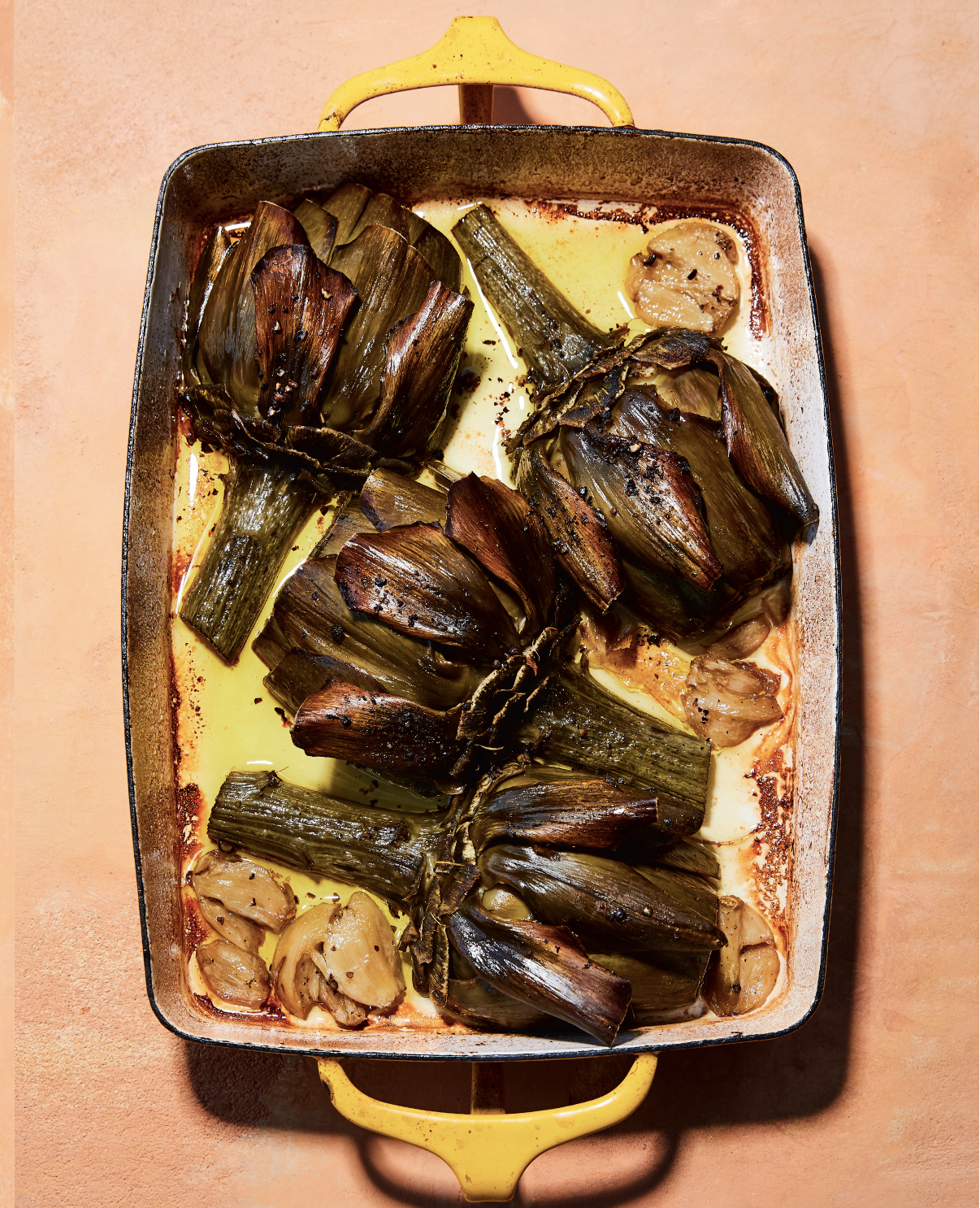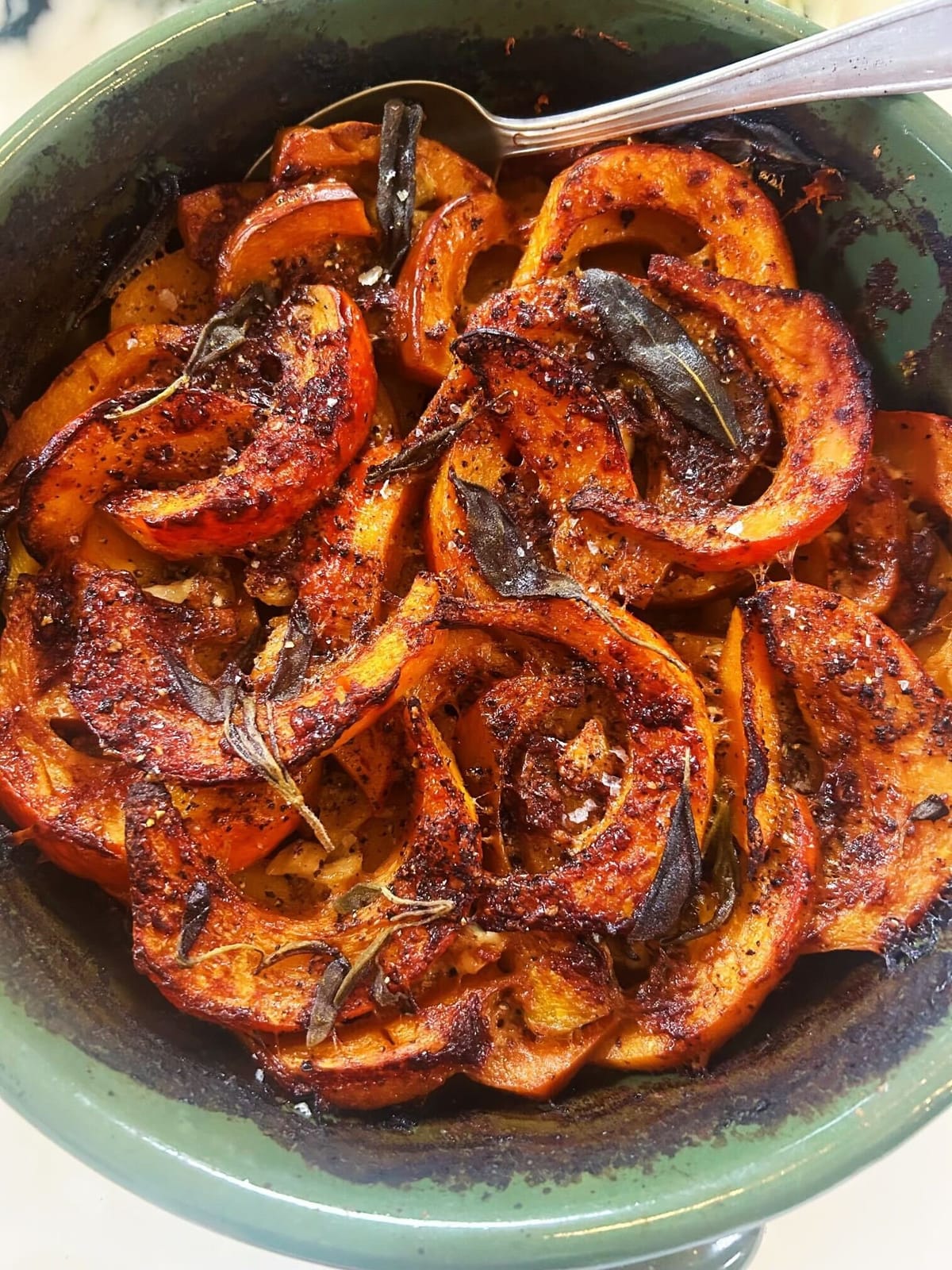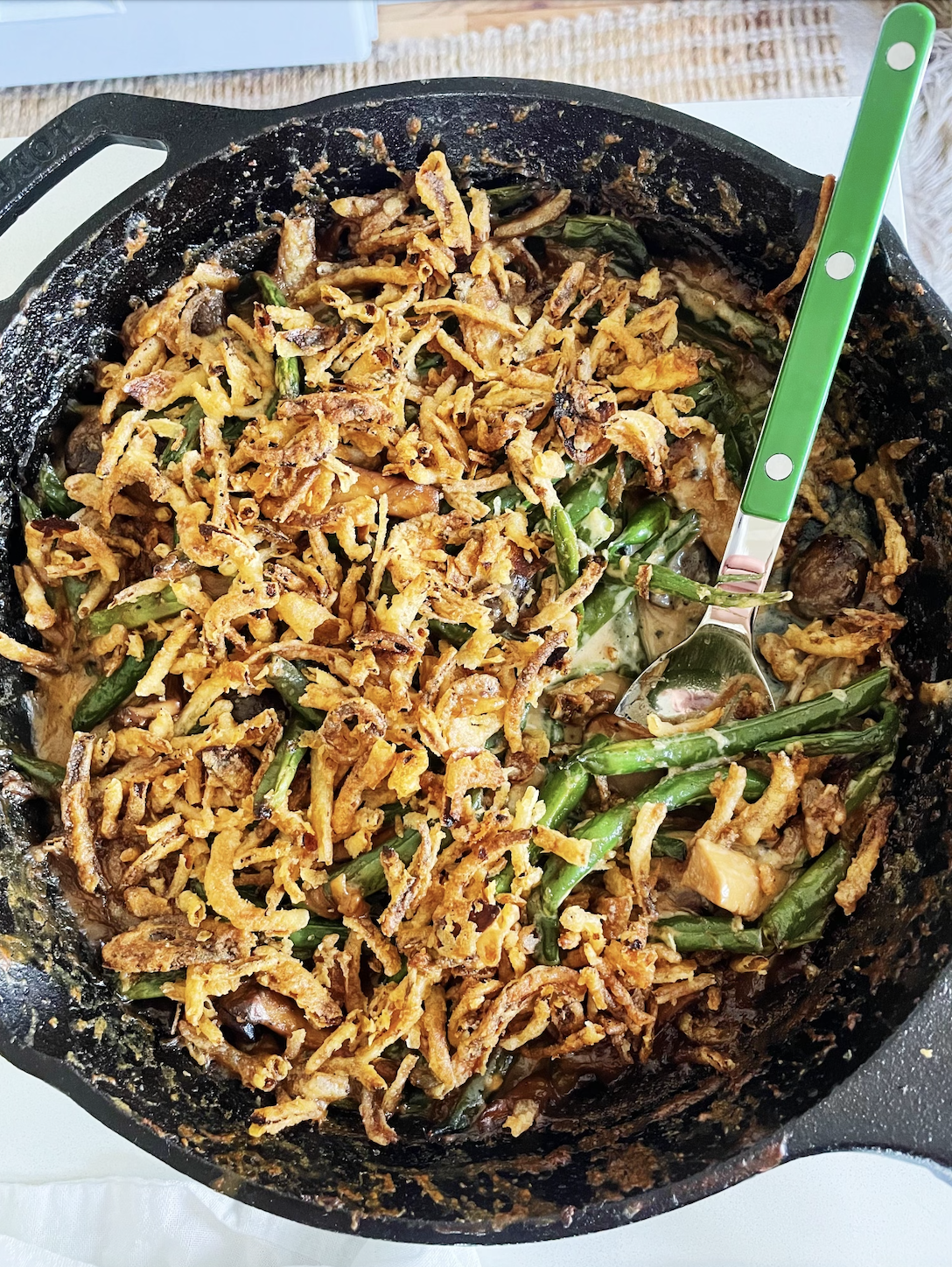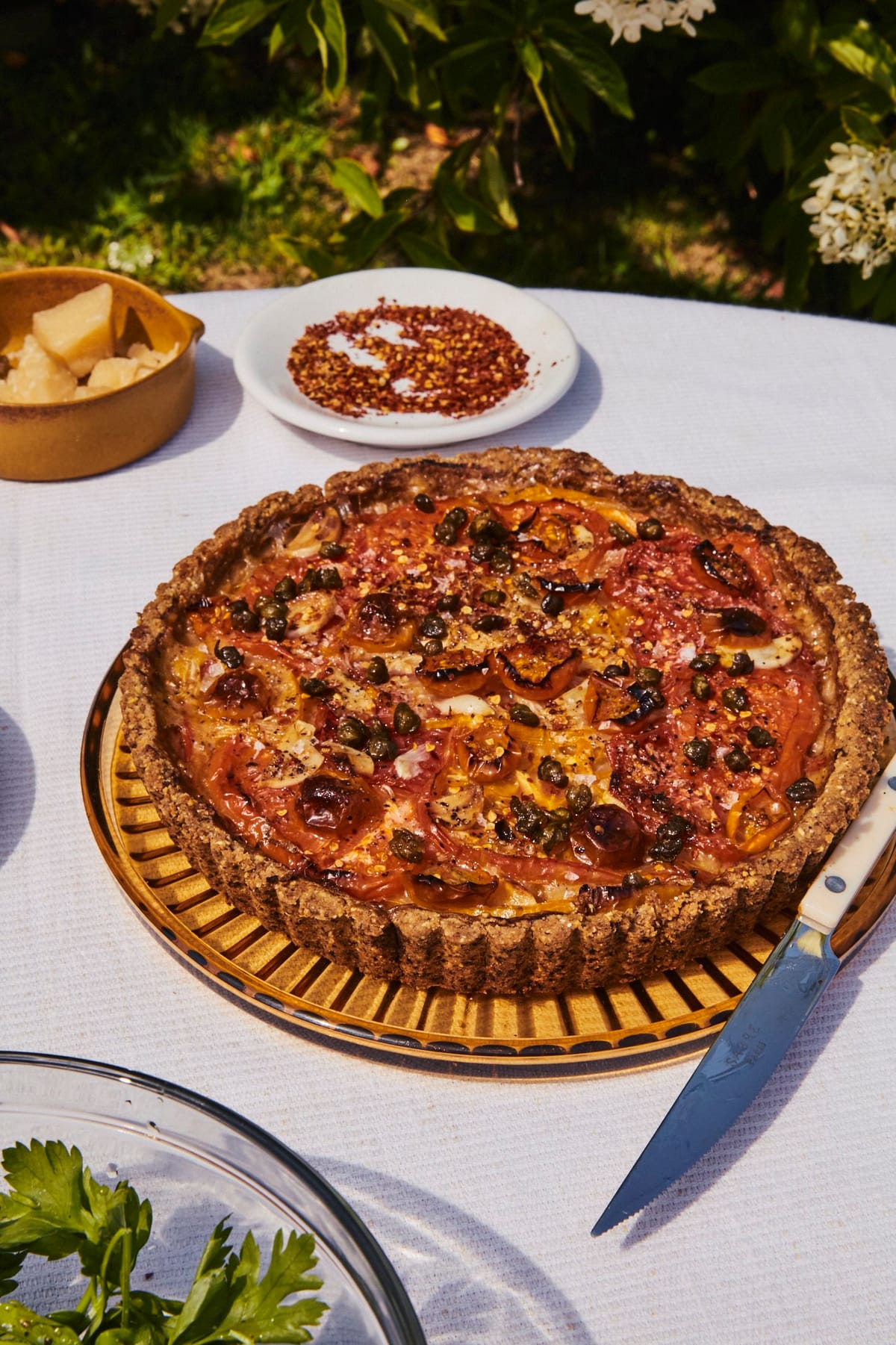Wine-Roasted Artichokes
Once these artichokes are cooked in their oily, white wine bath, you can eat them without teaching anyone how to navigate the thorny beast or deal with the feathery choke.

YIELD — 4–6 servings
This recipe involves a bit of good news and a bit of bad news. Which do you want first? I’ll go ahead with the good news: Once these artichokes are cooked in their oily, white wine bath, you can eat them without teaching anyone how to navigate the thorny beast or deal with the feathery choke. The bad news: You have to clean them while they are raw, which, depending on how much you’ve had to drink, could be at worst dangerous and at best pretty annoying. So why am I telling you to do it that way? Because it’s worth it. Hey —at least I’m not asking you to deep-fry anything.
The two-step cooking process achieves two things. First, you steam the artichokes covered in foil until tender, making each leaf down to the heart soft and edible (do not skip this part, or the leaves will not be soft enough to eat). Second, you uncover the artichokes to evaporate the excess liquid, and caramelize the bottom, and you get the outer leaves all crispy, which are so good for nibbling on (do not skip this part, or the whole thing will not be as delicious).
Seasoned with acidic white wine from the inside out, these artichokes need nothing more than the garlicky oil they’ve sizzled in for dipping, but I am a “more is more” person when it comes to artichokes and would welcome a lemony aioli or creamy labne, as well.
Ingredients
- 2–3 large artichokes (11⁄2–2 pounds total) 1 cup white wine
- 1 cup water
- 1⁄4 cup olive oil
- 4 tablespoons (1⁄2 stick) unsalted butter, cut into 1⁄2-inch pieces 4 garlic cloves, smashed
- Pinch of crushed red pepper flakes (optional)
- Kosher salt and freshly ground black pepper
- Lemony Aioli, optional
Preparation
- Preheat the oven to 425°F.
- Trim the very ends of the artichoke stem, but leave most of it (it’s an extension of the heart and will taste just as good). Using a serrated knife, slice the first 11⁄2 inches off the top, exposing the yellow-y purple rose- like interior. Using your hands, peel away the first two to three layers of those tough, dark green outer leaves, leaving the most tender, paler green ones behind. Using kitchen scissors, trim any lingering thorns on the leaves.
- Cut the artichokes in half lengthwise. Using a spoon, dig out the fuzzy choke of each half, making sure to scrape clean any lingering bits. Place the artichokes, cut side down, in a large baking dish (size will depend on whether you’re doing 2 or 3, but a 9 by 13-inch pan should do the trick either way). Don’t worry about storing them in acidulated water to prevent browning—they are going to brown regardless once you roast them, so who cares? I never really understood this.
- Pour the wine, water, and olive oil over the artichokes. Add the butter, garlic, and crushed red pepper flakes, if using; season everything with salt and pepper. (Remember you’re seasoning the artichokes and the cooking liquid, so be generous.) Cover tightly with foil and roast until the artichokes are totally tender, 45 to 55 minutes.
- Remove the foil and continue to roast until the liquid is mostly evaporated (the olive oil will linger behind), the tops of the artichokes are nicely browned, and the garlic begins to sizzle and brown in the olive oil (the cut sides of the artichokes will also be sizzling and browning), another 15 to 20 minutes.
- Transfer the artichokes to a large serving platter or bowl. Scrape any of the garlicky oil at the bottom of the baking dish into a small bowl for serving alongside the aioli, if you like.
DO AHEAD: Artichokes can be roasted a few hours ahead, kept loosely covered at room temperature. There is no need to reheat before serving, but you can definitely pop them into a hot oven for a bit to warm them through, if you like.




Discussion